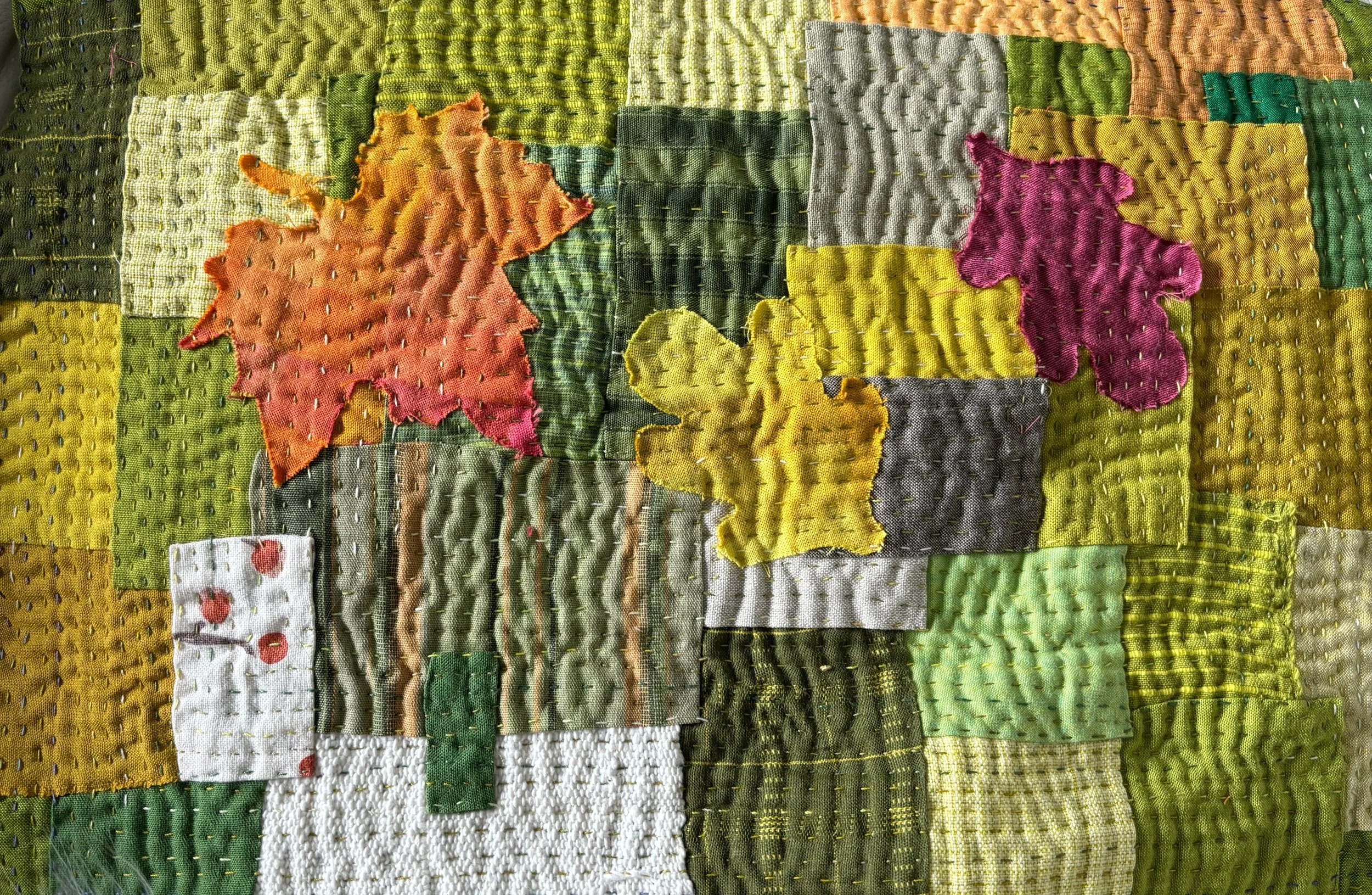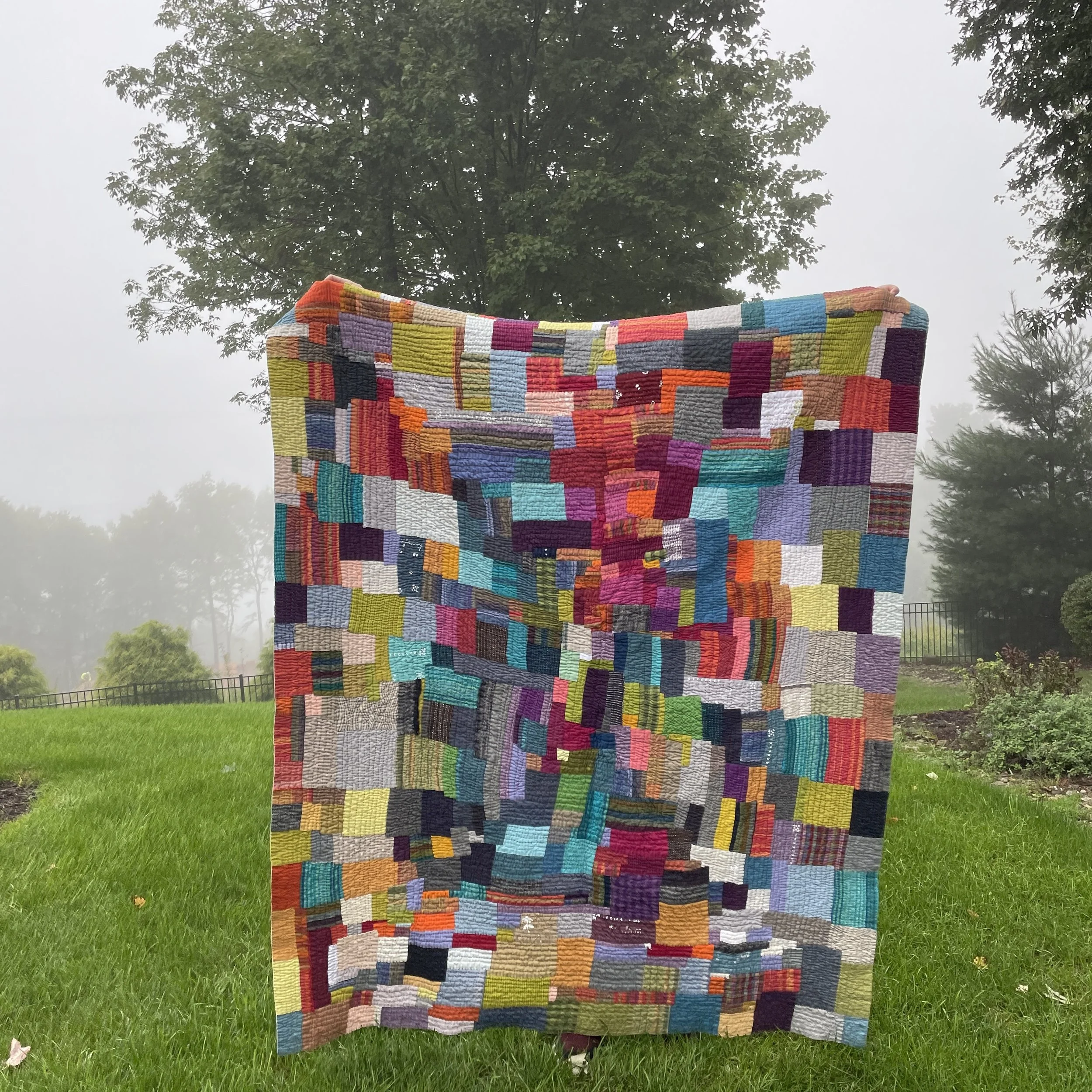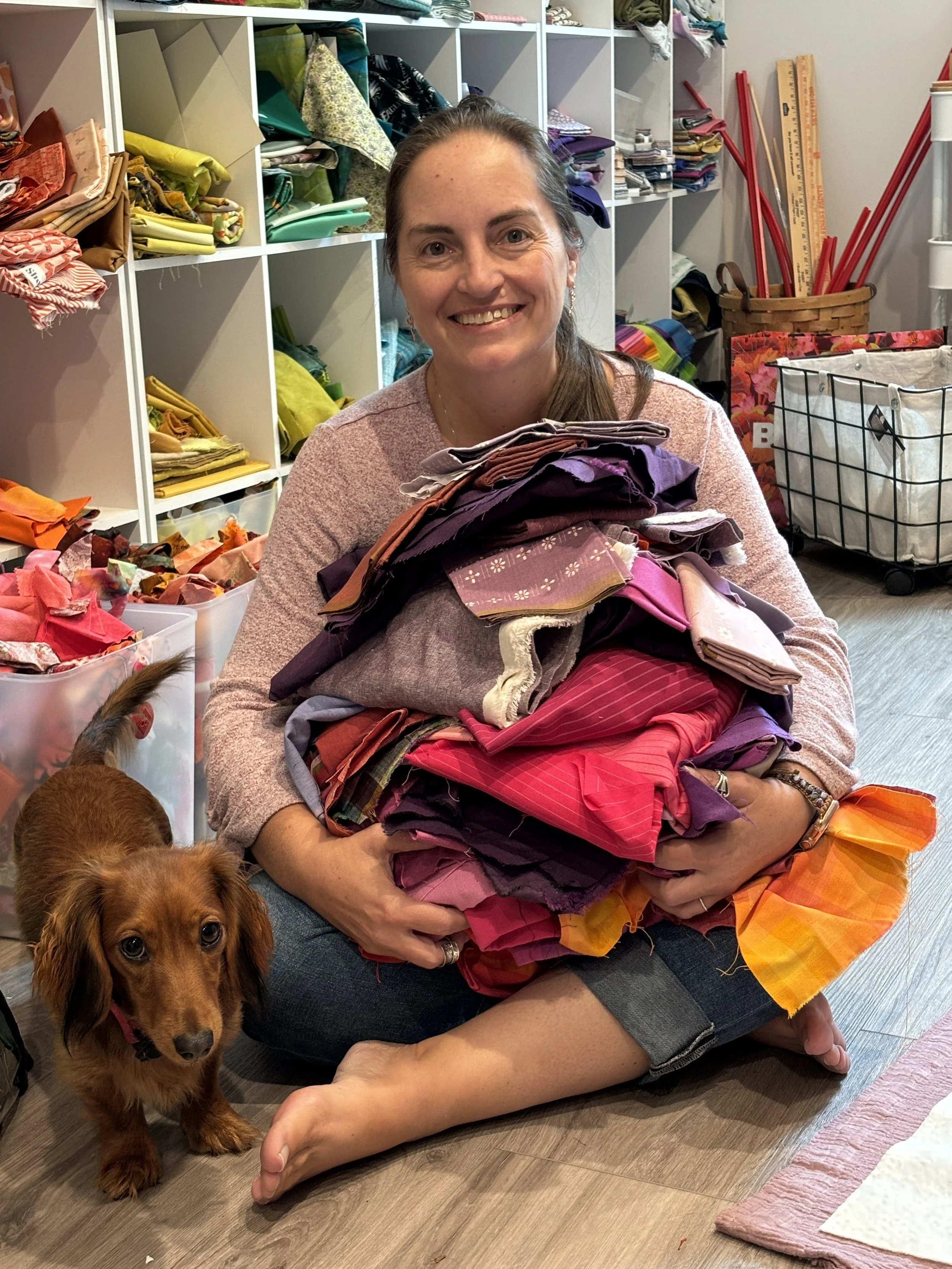Join the club
not sure where to start?
Check out these resources:
hey!
i’m JEN
I’m an artist focused on textiles, primarily quilting, but I also play with embroidery and other things as the mood strikes. I split time between New Jersey and Florida. I’ve got two dachshunds and love a good wiener joke.
The quilting bug bit me way back in 1999. I was a young mom with a baby. Alex Anderson unlocked the mysteries of quilting for me, at a time when I needed something to keep me sane.
Alex taught me that I should try at least two new techniques every day, and I’ve tried very hard to honor the lessons I learned.
Hand sewing is my favorite right now, and I love anything scrappy.
Currently I’m focused on Kawandi inspired quilting and over the top hand embroidery.












